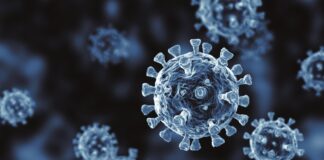The UK track of the Aqualunar Challenge, which calls on innovators to create technologies for use on the Moon to remove contaminants found in lunar water, has seen competitors put forward novel water purification technologies that could also be applicable for terrestrial use. The three successful teams received a combined total of £300,000 to take their innovations further.
SonoChem System
The SonoChem System, developed by Gloucestershire-based Naicker Scientific, was awarded the grand prize of £150,000. This groundbreaking innovation uses microwaves and ultrasound to purify water extracted from the Moon’s frozen soil, a crucial step in supporting long-term lunar missions.
Led by Lolan Naicker, Naicker Scientific’s SonoChem System employs ultrasonic technology to generate millions of microbubbles in melted lunar ice. These microbubbles create extreme temperatures and pressures that break down contaminants, producing safe, drinkable water for astronauts.
“Imagine digging up the soil in your back garden in the middle of winter and trying to extract frozen water to drink,” said Lolan Naicker. “Now imagine doing it in an environment that is -200°C, a nearly perfect vacuum, under low gravity, and with very little electrical power. That’s what we will have to overcome on the Moon. If we can make the SonoChem System work there, we can make it work anywhere, whether that’s on Mars’ glaciers, or here on Earth in regions where accessing clean water is still a challenge.”
FRANK
First runner-up was FRANK (Filtered Regolith Aqua Neutralisation Kit), developed by RedSpace, which was awarded £100,000.
FRANK uses a three-stage approach to deliver a continuous flow of drinking-grade water in a lunar environment that would first heat the lunar soil (regolith) sample in a sealed chamber to separate off volatile gases and leave a liquid of water, methanol and regolith fragments. The liquid is passed through a membrane to remove solid particles. The remaining liquid is distilled to separate the methanol from the water.
AquaLunarPure
AquaLunarPure, developed by a team from Queen Mary University of London, UK, won the second runner-up prize and was awarded £50,000.
The team’s system transforms melted lunar ice into ‘supercritical water’, a state in which oxidation removes all contaminants in a single step. A reactor would first heat lunar ice to leave behind dust and rock particles, then heat it to more than 373°C at 220 bars of pressure to turn it into ‘supercritical water’ – not a solid, a liquid or a gas, but a fourth state that appears like a thick vapour in which oxidation will remove all the contaminants in one step. Direct heating and insulation contribute to the high energy efficiency of this reactor, compared with current state of the art technologies.
A joint project between the UK Space Agency and the Canadian Space Agency, the Aqualunar Challenge aims to find innovative solutions to water purification on the Moon and here on Earth. UK Science Minister Lord Vallance said: “The Aqualunar Challenge was set up to overcome one of the most significant obstacles to humans surviving on the Moon or other planets – the availability of clean drinking water. By teaming up with our Canadian partners and harnessing the wealth of talent and creativity found across the UK, the challenge has uncovered a range of new ideas, including Naicker Scientific’s SonoChem system. Many of these ideas could not only fuel future space exploration, but also help improve lives and solve water shortages here on Earth – mitigating the impacts of climate change as we work towards a net zero future.”








